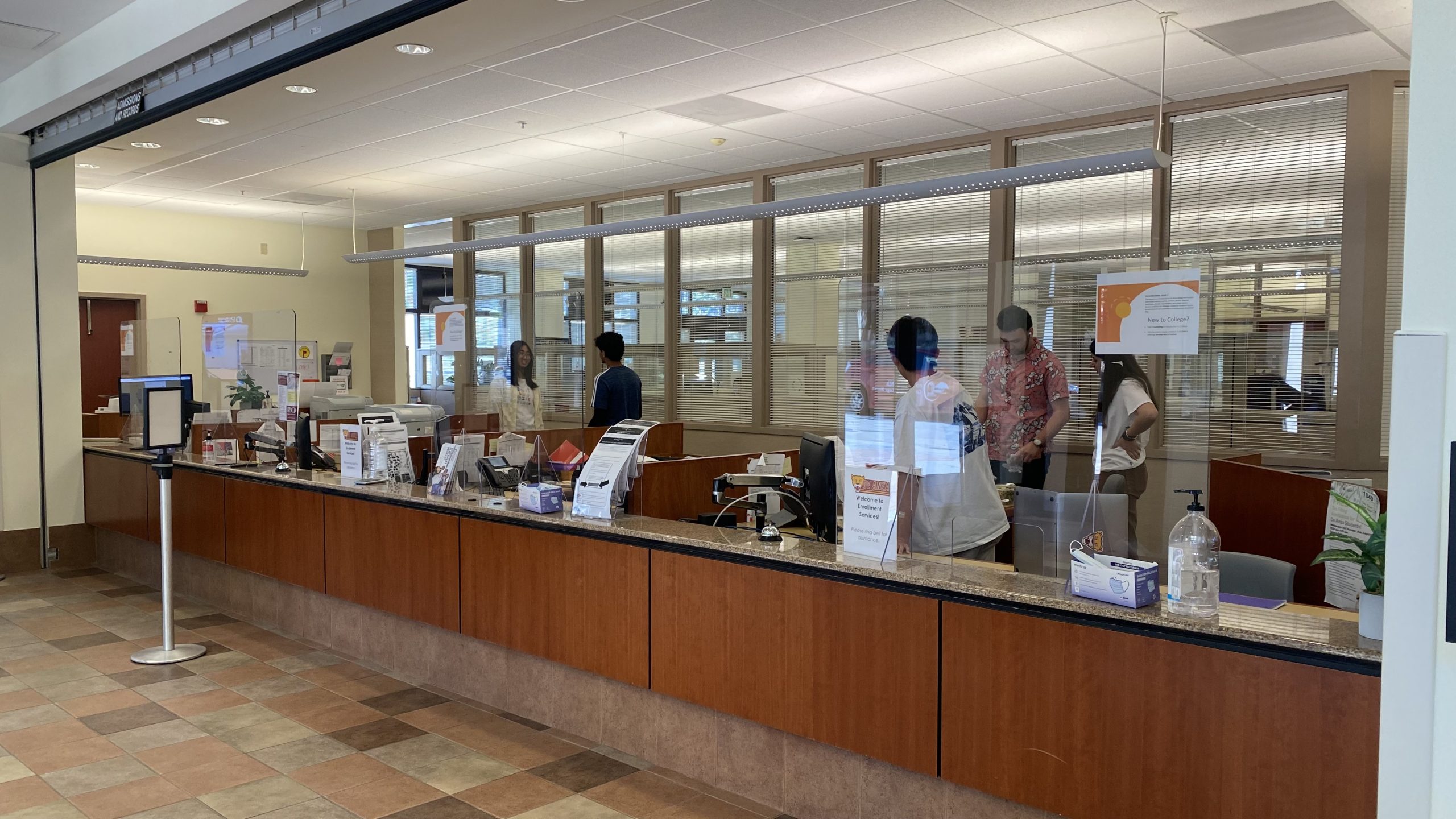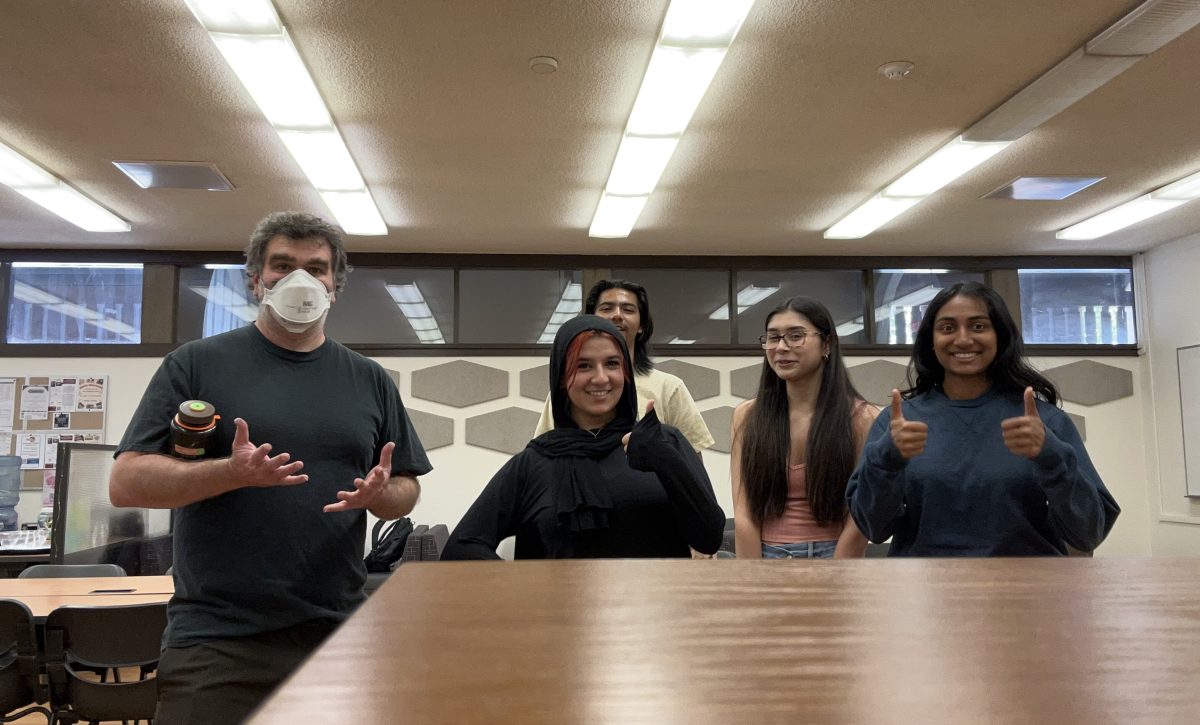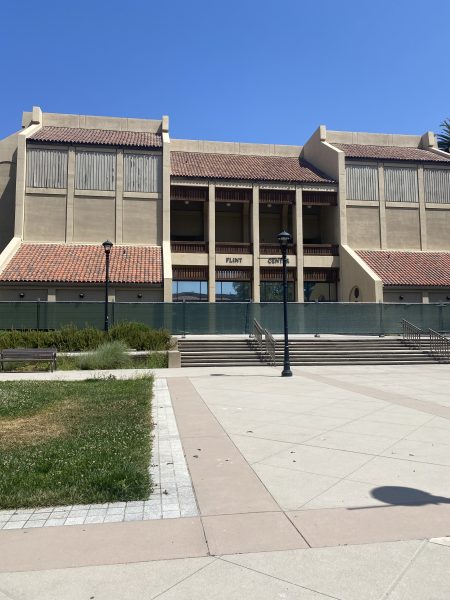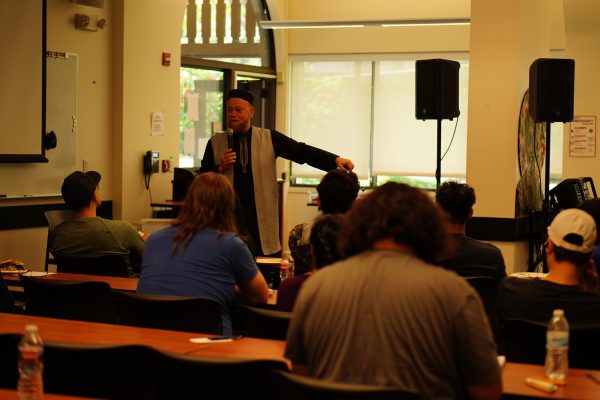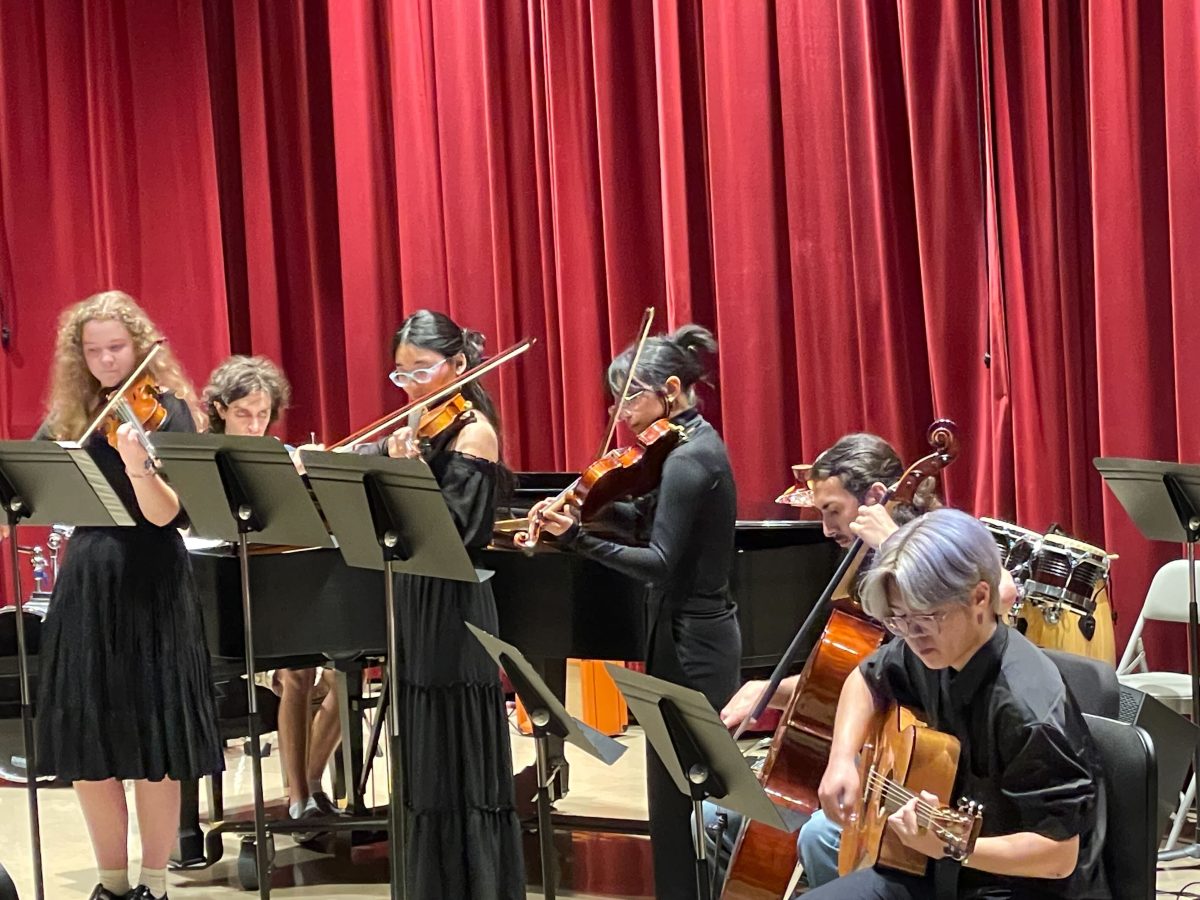The De Anza College Promise, one of the main reasons 8,720 students chose De Anza of its total 14,552 students enrolled in the 2022 spring quarter, according to data that FHDA Chancellor Lee Lambert provided, is gutted for all students starting this quarter and moving forward for its limited assistance.
The cut will lock De Anza into a feedback loop of further budget cuts and lower enrollment; it will also discourage students from taking electives, punish failure on a pay-to-play basis and marginalize low-income students — all in the name of saving the college money.
Under the Promise, students who enrolled in 2022 and before could get their degree for free with up to 21.5 credits per quarter — the most any De Anza student can take, whether they get financial aid or not. Now, turn all that on its head — with recent changes to the Promise taking effect this quarter, class of 2025 can only qualify for 15 free units and will be charged tuition per unit if they surpass, whether they can afford it or not.
Most of De Anza’s associate degrees require at least 15 units while the Promise requires 12 units to stay eligible for the program except for summer quarter. With the former structure, Promise students had six to nine credits each quarter to spare on electives, or a total of 30 to 54 spare units over their time at De Anza.
The cut turns De Anza into a pressure cooker — students now have to get every class perfect on their first try, so why would they explore any interests outside of what is required for their degree when they might fail? Why fail when it will cost them money?
Electives foster community; especially in the post-COVID era when students are slowly getting back to in-person social interaction, the more they talk to each other the faster De Anza becomes a “community” again, where it was once filled with students all around every corner on campus, further encouraging higher enrollment per student.
Electives also boost students’ GPAs and give students classes they genuinely look forward to, helps them see school as more than just a grind; and with more classes overall, if they get a D in one class, that doesn’t knock them out of tuition-free college.
Instead of creating a less stressful and more welcoming environment for students to flourish, the recent Promise cut will change De Anza’s culture to one reminiscent of high school AP classes — the stakes for failure are much higher than they should be, especially for students who cannot afford tutors and retakes.
Except this time, instead of whether or not students get early college credit, their entire education may be on the line. Even if a student is still academically “in good standing,” if they flunk a class they need, now they will have to pay for it out of pocket.
This change is bound to set off a sharp decrease in class enrollment, which further decreases allocated funding for those classes or even the number of classes De Anza will offer to begin with.
Community colleges like De Anza let their students explore more options than they normally would have access to, and making this pay to play renders it inaccessible.
De Anza’s electives thrive thanks to people going outside their majors’ requirements; for example, its choral, world language, dance, theater, and/or engineering programs all do not have a major directly tied to them (even if some supplement a major). As De Anza makes its Promise students hit exactly 15 credits every quarter, it leaves them without the room they need — and once had — to explore and learn what they want to.
Ultimately, though De Anza’s cuts to its College Promise will affect the student body as a whole, poorer working class students will bear the brunt of this load. The abrupt, unnecessary switch to tuition-based extra units betrays students who chose De Anza precisely because of its financial support, especially if they have to support their families.
In the spring quarter, 5,915 De Anza students reported as low-income, with their family making under $50,000 annually.
That is 41% of De Anza’s student body, or about two in every five students.
To them, community college is a viable gateway into higher education and allows them to save money in the first two years. These are the students burdened with the longest commutes to De Anza, with the least opportunities outside of De Anza, who have the most to lose from cuts to Promise.
These students deserve the same support from the Promise as those who came before them.
While, yes, De Anza’s quarterly tuition does not balloon into the tens of thousands, it’s still over $500 every quarter to attend full time without the Promise program, or about $3,000 to get a degree. For a student who already struggles to pay rent, it’s infeasible to shell out another $500 on top of everything else.
On its website, De Anza cites “changes in state funding” for why it gutted the College Promise, implying the reason is because it no longer receives the same level of support as it did during COVID-19.
That would make sense on its face; ignore the fact that Foothill College still offers the exact same Promise that De Anza used to, still covering up to 21 units, while only taking in over half as many students as De Anza and being in the same district.
Both the De Anza and Foothill College Promises draw from the Foothill-De Anza Community College District’s funds particularly from restricted and categorical fund 121/131 of the district’s annual budget and have (until recently) stayed the same since 2019. It should make sense that these cuts are coming from a place of budget falling drastically compared to the student population, especially when adjusted for inflation.
However, a closer look at the budget and at headcount numbers together might tell a different story. In reality, the student population is declining far faster than the 121/131 budget is; even as the budget rose thanks to subsidies during the COVID pandemic, fewer students were enrolling in De Anza.
When the program expanded to free tuition with 21 credits per quarter by the 2018-2019 school year, fund 121/131 had $50,373,184 (adjusted for inflation, that’s $61,560,630.46) allocated to it, compared to this year where fund 121/131 had $56,041,010 allocated.
De Anza lost a lot of money relative to last year thanks to a sharp decline in federal funding after pandemic relief — fund 121/131 specifically lost around $31 million in total funds ($36 million adjusted for inflation), five sixths of that decline directly caused by federal defunding — but compared to when the College Promise programs began, overall, the district has only lost around $5.5 million, adjusted for inflation (looking at just the unadjusted numbers, the budget has increased $6 million over this timespan). That’s 8% of the budget for this one particular area; not the overall budget, but the specific portion that only funds the Promise programs at both schools, and that provides a major incentive to choose De Anza.
Compare that to student headcount, which has declined year after year long before COVID hit. In 2019, De Anza had 17,190 students enrolled in the 2019 spring quarter alongside Foothill’s 12,329 students, totalling 30,519 students in the Foothill De Anza Community College District. This year’s spring quarter, De Anza and Foothill had 14,492 and 9,749 students respectively enrolled, totaling 24,241 in the district; a 20.57% decline in headcount, or 6,278 less students attending both schools.
While the sudden end of COVID-era subsidies makes it look as though the program is unsustainable, an overall 8% cut in funding (only after accounting for inflation) is not a good reason to phase out benefits to a student population declining at double the budget’s pace.
The funny thing is that De Anza isn’t even suffering the heaviest losses from this — De Anza’s headcount dropped 20.378% over the last five years, while Foothill suffered a 21.712% drop in headcount — meanwhile, De Anza students are the ones getting their free electives taken away.
This isn’t to say that Foothill’s students should also get their electives cut — obviously not. They deserve that benefit, and so do De Anza students.
Despite losing a greater number of its student body, the fact that Foothill continues the Promise as it is, proves that the district budget still has more than enough room to continue providing full support to the students that need it the most. Rather, De Anza leaves its students with a raw deal that barely allows them to graduate tuition-free, provides very little room for failure or exploration and discourages students from continuing to work towards their associate’s degree and beyond if they mess up.
De Anza’s choice to make students pay for electives further marginalizes already disadvantaged students from opportunities outside of their major. It is a conscious choice that administrators in charge of the College Promise are making under the guise of cutting their losses after losing COVID-era funds, even when De Anza could sustain the Promise before the pandemic hit and — as Foothill makes glaringly obvious — that the school can still afford to sustain a comprehensive Promise now.
De Anza’s student body deserves the same Promise that they had last year and years before, a Promise of a truly tuition-free college.




